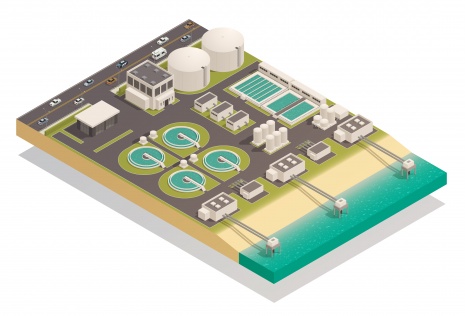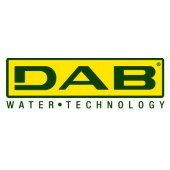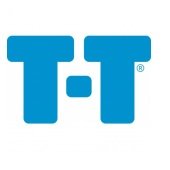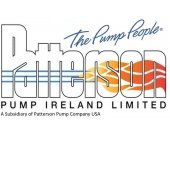Securing London’s water supply

flow learns how motor and drive manufacturer, WEG, partnered with Thames Water and BGEN to upgrade the large pump motors at Ashford Common water treatment works.
Ashford Common water treatment works, located in Surrey, England, is one of Europe’s biggest water treatment works. With a maximum output of approximately 680 megalitres a day, Ashford delivers around one-third of London’s water supply, with the remaining supply being delivered by 20 or so smaller works.
Inaugurated in 1953, Thames Water’s Ashford site underwent an extensive infrastructure upgrade in the early to mid-90s and this was when the pumping station was built. The pumping assets on site were therefore about 25 to 30 years old before the upgrade, and coming to the end of their service life.
This vast plant has five Weir Group axial flow pumps, powered by 7.5 tonne electric motors, each capable of pumping about 180 megalitres of water. The stored water pumping station brings raw, untreated river water from large storage reservoirs onto the site, ready for treatment. When the levels are low, for instance during the period of drought in the summer of 2022, all four out of five pumps are needed. In a situation like this, if two pumps fail, it could be catastrophic.
Losing one of these units represents a 25% loss of output from the site, and because Ashford Common is so big, this loss is equivalent to the complete closure of two of the smaller treatment works. There isn’t the resilience in the network to take such a significant hit. If two pumps failed, low pressures and loss of water would be experienced — something that the industry hasn’t seen in decades. Therefore, these pumps are critical in maintaining the water supply into London.
Combatting equipment failure
In 2018, equipment breakdown became a real concern. Two key issues were afflicting the motors, firstly overheating, which caused degradation of the insulation, and although the bearings had been maintained, they were also coming to the end of their life. Ashford was also experiencing a number of faults. The insulation was degrading so much that it resulted in a short circuit between two phases, an issue which could cause a failure of the motor.
When this happens, the motor must be removed and rewound. A rewound motor will lose some of its efficiency unless the work is carried out according to strict guidelines set out by the Association of Electrical & Mechanical Trades (AEMT), and some of these motors have been rewound three to four times. Following refurbishment, Ashford’s engineers expected to get a lifespan of between five and ten years out of the motors. However, they were failing within a couple of years of the work being carried out.
Consequently, Thames Water approached three of its framework suppliers to provide a replacement motor, and WEG was brought on board to combat the high failure rates. According to Ashford’s engineers, one of the key reasons WEG stood out was that it offered a turnkey solution instead of simply acting as a supplier. For Ashford Common’s small team, already covering a big works with loads of assets, it wasn’t an option to project manage the installation internally. Its maintenance team is usually busy with repairs and reactive work, so WEG’s offer to do all the troubleshooting and make sure that all the right equipment and the right people were on site was welcome.
As a commissioning partner, the company chose a business that both WEG and Thames Water had worked with before – BGEN, previously known as Boulting Group. BGEN provided the onsite installation and project management in collaboration with WEG’s engineers.
Bespoke engineering
WEG came to the site on a number of occasions, looked at the existing motors, reviewed the setup and advised Ashford to opt for a bespoke WEG HGF high-performance line 600kW, 415V, ten pole flange mounted motor due to its reliability and rugged nature. The HGF line is highly energy efficient, with low maintenance costs and high-performance characteristics. This product line is ideal for operating in the toughest environments, such as water applications which require increased strength and durability.
The way that the huge power cables feed the motor required out-of-the-box thinking. There are nine connectors on the power side and about 24 on the control side. The cables are stiff and not easy to manipulate due to their large size, and they are about two metres tall. Instead of having to chop the cables and then re-terminate and gland them – which is messy, difficult and physical work – WEG’s engineers suggested manufacturing a bespoke terminal box so the glanding where the cable goes through the metal on the junction box could be kept the same. WEG measured everything up and purpose made a connection box so that the existing plate could be married up. This took a lot of accurate measuring because the cables are a set length, and each cable is slightly different.
A continued partnership
The motor was replaced in 2019. Due to the reliability results of the first installation, the team at Ashford proactively purchased a second identical motor which was installed in 2021.
“Our Brazilian assembly plant has extensive experience manufacturing motors of this size for water applications,” explained Gustavo Da Silva, WEG Sales and Development Manager for high voltage solutions in Europe and the Middle East. “In fact, WEG has high voltage motors fitted in several key water plants in the UK. With the first motor, our team built the motor with the junction box to suit, and that significantly minimised the time on site.
“When you’re dealing with something of this size, these small details make the difference. With this second motor, there were a few alterations in terms of physically how the cables were mounted. Additionally, guarding was retrofitted to the first motor on site. The second time around, this was done in the WEG factory instead.”
“Everything is supersize at Ashford,” explained Iggy Pont Lezica, Operations Technical Lead, Ashford Common WTW. “This introduces complexity from an operating and maintenance point of view because you can’t just go and get things off the shelf. Finding suppliers that can fulfil our needs and crucially have the forward-thinking approach and prior experience of working on this scale is a challenge.
WEG filled us with confidence from the start.
“The newfound stability of the station has been noticeable. Four years ago, it was at the highest risk by far, and now it just works away in the background and receives routine maintenance. There are so many other aspects for the maintenance team to look at; we expect the equipment that simply shifts the water from one place to another to work effectively and reliably. Thanks to WEG’s involvement, it does,” Iggy concluded.
Three months before the second motor was delivered, another old motor failed. However, since this failure, Ashford hasn’t experienced any further breakdowns. A significant amount of work was done between 2018 and 2020, including replacing five drives and proactively conducting refurbishments on the pumps. The last pump is currently being refurbished, and two further motors will be replaced in 2023 and 2024. www.weg.net
Back to Latest News

3.png&w=170&h=170)


1.png&w=170&h=170)




2.jpg&w=170&h=170)


